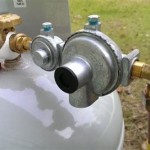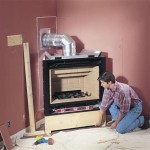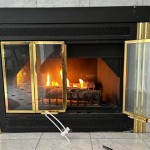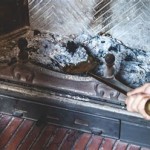```html
High-Efficiency Gas Fireplace Inserts: A Comprehensive Overview
Gas fireplace inserts have become increasingly popular as homeowners seek to enhance the efficiency and aesthetics of their existing masonry or zero-clearance fireplaces. These inserts offer a convenient and controllable alternative to traditional wood-burning fireplaces, providing warmth with the flip of a switch and eliminating the mess and effort associated with firewood. Crucially, advancements in technology have led to the development of high-efficiency gas fireplace inserts, offering substantial improvements in energy savings and environmental impact.
A gas fireplace insert is essentially a self-contained heating unit designed to fit within the opening of an existing fireplace. It typically includes a burner, ceramic logs or other decorative elements, a glass front, and a venting system. Gas fireplace inserts operate on either natural gas or propane, offering flexibility for homeowners depending on the availability of fuel sources. The “high-efficiency” designation indicates that the insert is designed to maximize the conversion of fuel into usable heat, minimizing waste and reducing energy consumption.
Understanding the characteristics and benefits of high-efficiency gas fireplace inserts is crucial for homeowners considering this upgrade. The information provided in this article aims to offer a comprehensive overview of these heating solutions, covering key aspects such as efficiency ratings, venting options, installation considerations, and factors to consider when selecting the right model.
Understanding Efficiency Ratings
The efficiency of a gas fireplace insert is a critical factor in determining its overall performance and cost-effectiveness. Efficiency ratings indicate the percentage of fuel consumed that is converted into usable heat. Higher efficiency ratings translate to lower fuel consumption and reduced heating costs. Two primary efficiency ratings are commonly used: Annual Fuel Utilization Efficiency (AFUE) and steady-state efficiency.
AFUE is a measure of the overall efficiency of a heating appliance over an entire heating season, taking into account factors such as start-up, shut-down, and cycling losses. AFUE is typically expressed as a percentage, with higher percentages indicating greater efficiency. For example, an AFUE of 80% means that 80% of the fuel consumed is converted into usable heat, while the remaining 20% is lost through venting and other factors. While a useful metric, AFUE might not perfectly represent the real-world performance of a fireplace insert due to variations in usage patterns and climate conditions.
Steady-state efficiency, on the other hand, represents the efficiency of the appliance when it is operating at a constant rate under controlled conditions. This rating provides a snapshot of the appliance’s performance at peak efficiency. While steady-state efficiency can be higher than AFUE, it does not account for losses associated with start-up and shut-down. Manufacturers often advertise steady-state efficiency, so it is important to understand the distinction between the two ratings when comparing different models.
High-efficiency gas fireplace inserts typically have AFUE ratings above 70% and can achieve steady-state efficiencies of 80% or higher. To achieve these high efficiency ratings, these inserts often incorporate features such as sealed combustion systems, which draw combustion air from outside the home, and advanced burner designs that maximize heat transfer. Understanding these efficiency ratings helps homeowners make informed decisions when selecting a gas fireplace insert that meets their heating needs and budget.
Furthermore, it is important to consider the long-term cost savings associated with high-efficiency models. While the initial investment may be higher compared to standard-efficiency models, the reduced fuel consumption can result in significant savings over the lifespan of the insert. Homeowners should calculate the payback period based on their fuel costs and usage patterns to determine the overall cost-effectiveness of different models.
Venting Options: Direct Vent vs. B-Vent
Proper venting is essential for the safe and efficient operation of a gas fireplace insert. The venting system removes combustion byproducts, such as carbon monoxide, from the home. There are two primary venting options for gas fireplace inserts: direct vent and B-vent. Understanding the differences between these venting systems is crucial for selecting the appropriate insert for a particular fireplace and ensuring safe installation.
Direct vent systems are the most common type of venting for high-efficiency gas fireplace inserts. Direct vent systems draw combustion air from outside the home and exhaust combustion gases directly to the outside as well through a coaxial vent pipe. This pipe, typically consisting of two concentric tubes, ensures a complete separation between the combustion air intake and exhaust gases. This design eliminates the need for a traditional chimney and allows for greater flexibility in installation, as the vent can be run horizontally through a wall or vertically through the roof.
The sealed combustion chamber of a direct vent insert prevents indoor air from being used for combustion, which improves efficiency and reduces the risk of backdrafting. Direct vent systems also minimize heat loss through the venting system, further enhancing the overall efficiency of the insert. The increased safety and efficiency of direct vent systems make them a popular choice for modern gas fireplace inserts.
B-vent systems, also known as natural draft vents, are designed to be used with existing chimneys. These systems rely on natural convection to draw combustion gases up the chimney and out of the home. B-vent systems require a properly sized and functioning chimney to ensure adequate draft and prevent backdrafting. High-efficiency gas fireplace inserts that utilize B-vent systems often incorporate features to improve draft and minimize heat loss, but they may not be as efficient as direct vent models.
When selecting a gas fireplace insert, it is essential to consider the existing venting infrastructure and local building codes. In some cases, upgrading to a direct vent system may be necessary to accommodate a high-efficiency insert. A qualified HVAC professional can assess the existing chimney and venting system and recommend the appropriate venting option for a specific fireplace insert.
Key Features and Considerations When Choosing an Insert
Selecting the right high-efficiency gas fireplace insert requires careful consideration of several key features and factors. This includes the size of the space to be heated, the desired aesthetic appearance, the available fuel source, and the overall budget. Evaluating these factors will help homeowners choose an insert that effectively meets their heating needs and enhances the ambiance of their homes.
The heating capacity of a gas fireplace insert is typically measured in British Thermal Units (BTUs). A higher BTU rating indicates a greater heating capacity, suitable for larger spaces. It is essential to choose an insert with a BTU rating that is appropriate for the size of the room to be heated. An undersized insert may not provide adequate heat, while an oversized insert may cycle on and off frequently, reducing efficiency and comfort. Consulting with a qualified professional can help determine the appropriate BTU rating for a specific application.
The aesthetic appearance of a gas fireplace insert is another important consideration. Inserts are available in a variety of styles and finishes, ranging from traditional to contemporary. Options include various log sets, decorative glass, and firebox liners. Homeowners should choose an insert that complements the existing décor of their homes and creates the desired ambiance. Many manufacturers offer customizable options allowing homeowners to personalize the appearance of their inserts.
The available fuel source, whether natural gas or propane, will also influence the choice of gas fireplace insert. Some inserts are designed to operate on either fuel source, while others are specifically designed for one or the other. It is important to ensure that the selected insert is compatible with the available fuel source. If propane is the preferred fuel, a propane tank and connection will be required. The cost of fuel should also be considered when evaluating different models.
Finally, the overall budget is a critical factor in selecting a gas fireplace insert. The cost of the insert, installation, and venting can vary significantly depending on the model and features. It is important to obtain multiple quotes from qualified installers and to factor in the long-term cost savings associated with high-efficiency models. Investing in a high-quality, high-efficiency gas fireplace insert can provide years of reliable and cost-effective heating.
In summary, choosing a high-efficiency gas fireplace insert requires careful consideration of efficiency ratings, venting options, heating capacity, aesthetic appearance, fuel source, and budget. By understanding these key factors, homeowners can select an insert that meets their heating needs, enhances the ambiance of their homes, and provides long-term energy savings.
```
Why A Wood Burning Fireplace Insert Bethesda Md Service

Wood Burning Fireplace Inserts Insert Installation

Liberty Lri6e High Efficient Large Gas Insert Fireplace S Hearth Home

Napoleon Epi3 Wood Fireplace Insert Inserts By Rockford Chimney

T25i Timberwolf Wood Fireplace Insert Hearth Stove Patio

Large Flush Wood Rectangular Nexgen Hybrid Made In America Fireplace Xtrordinair

High Efficiency Fireplace Inserts Vancouver Gas Fireplaces

High Efficiency Inserts Fireplaces In Calgary Hearth Home

Osburn Stratford Ii High Efficiency Wood Fireplace Woodland Direct

Gas Fireplace Inserts Fireplacesdirect Com
Related Posts








